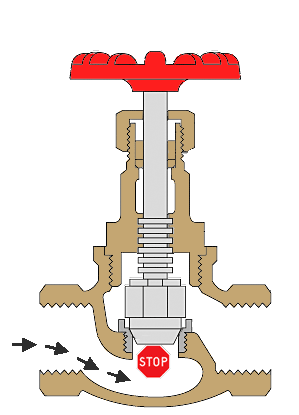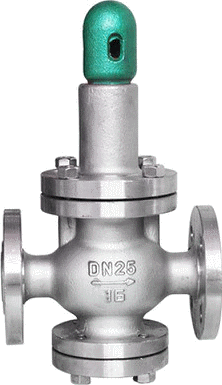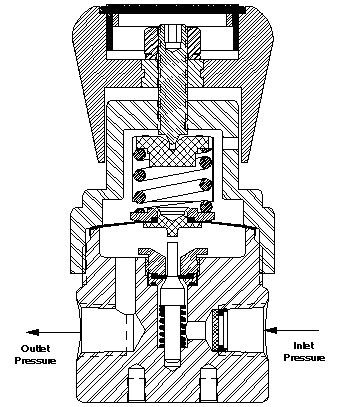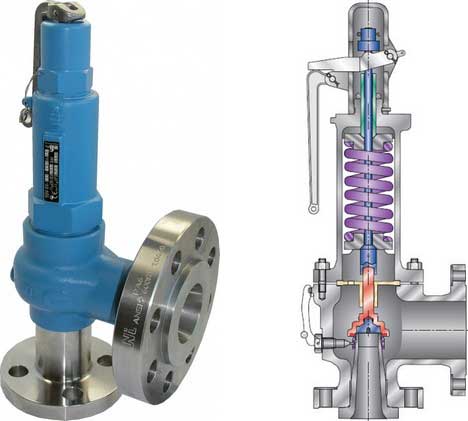Reducing pressure
For the simplest pressure reduction, simply use a conventional globe valve in a fixed partially open position, or by placing an orifice plate in the flow. However, any fluctuation in flow rate would be accompanied by a corresponding fluctuation in pressure. To avoid such conditions, pressure reducing valves are used to precisely control downstream pressure.
Pressure Reducing Valves
Pressure reducing valves (PRVs) automatically adjust the degree of valve opening so that the pressure remains unchanged even as the flow rate fluctuates.
Depending on the model, pressure reducing valves are designed for steam, air, gases and liquids.
PRVs in steam applications
In pressure reducing valves, the mechanism that automatically adjusts the downstream pressure usually uses the balance of forces between the steam pressure and an adjustment spring. Currently, this is a universal concept on almost all manufactured regulators. However, there are different ways this mechanism is used to control the degree of valve opening.
Direct Acting - Changes in downstream pressure are detected by the bellows, which expands or contracts depending on the change in pressure. The movement of the bellows is transmitted directly to the spring, which opens or closes the main valve, thus maintaining the downstream pressure at a certain level.


Pilot Operated - Changes in downstream pressure are sensed by the pilot valve mechanism (bellows connected to a pilot valve unit) through a signal line connecting the pilot valve controller to the secondary pressure side. Movement of the bellows will open or close the pilot valve, controlling the amount of steam that affects the movement of the piston, which will close or open the main valve, keeping the downstream pressure at a stable level.


Typical applications in a steam-using plant
Small-load applications such as sterilizers, unit heaters, humidifiers and small process equipment can usually use a simple direct-acting PRV for pressure reduction.
In the case of larger flows, such as steam distribution pipes, the load can fluctuate greatly depending on the operational status of the receiving equipment. Such load variations and large capacities require the use of a pilot-controlled PRV to reduce pressure.
The amount of steam used by certain equipment during startup can vary significantly from that required during normal operation. Such large variations may also necessitate the use of a pilot-controlled PRV for pressure reduction.
Related Post(s)

A pressure Relief Valve is a safety device designed to protect a pressurized vessel or system during an overpressure event...